 Mysteries
Mysteries  Mysteries
Mysteries  Weird Stuff
Weird Stuff Ten Truly Wild Theories Historical People Had about Redheads
 Movies and TV
Movies and TV 10 Actors Who Hate Their Famous Movie Roles
 Technology
Technology 10 Thrilling Developments in Computer Chips
 Misconceptions
Misconceptions 10 “Groundbreaking” Scientific Studies That Fooled the World
 Books
Books 10 Famous Writers Who Came Up with Everyday Words
 Mysteries
Mysteries 10 Unsolved Mysteries from the Cold War
 Pop Culture
Pop Culture 10 Fictional Sports That Would Be Illegal in Real Life
 History
History 10 Mind-Blowing Facts from History That Don’t Seem Real
 Movies and TV
Movies and TV 10 Unconventional Ways Famous Actors Got into Character
 Mysteries
Mysteries 10 Chilling Facts about the Still-Unsolved Somerton Man Case
 Weird Stuff
Weird Stuff Ten Truly Wild Theories Historical People Had about Redheads
 Movies and TV
Movies and TV 10 Actors Who Hate Their Famous Movie Roles
Who's Behind Listverse?

Jamie Frater
Head Editor
Jamie founded Listverse due to an insatiable desire to share fascinating, obscure, and bizarre facts. He has been a guest speaker on numerous national radio and television stations and is a five time published author.
More About Us Technology
Technology 10 Thrilling Developments in Computer Chips
 Misconceptions
Misconceptions 10 “Groundbreaking” Scientific Studies That Fooled the World
 Books
Books 10 Famous Writers Who Came Up with Everyday Words
 Mysteries
Mysteries 10 Unsolved Mysteries from the Cold War
 Pop Culture
Pop Culture 10 Fictional Sports That Would Be Illegal in Real Life
 History
History 10 Mind-Blowing Facts from History That Don’t Seem Real
 Movies and TV
Movies and TV 10 Unconventional Ways Famous Actors Got into Character
Top 10 Fascinating Facts About Al Capone’s Final Years
Al Capone will forever go down in history as one of the most notorious gangsters of all time. Despite countless depictions from the big screen to television, little light has been shed on the final years of his life. The following 10 entries not only describe a powerless, defeated man but also take an intimate look into his time spent on the infamous rock, Alcatraz.
10 The End Of Luxury
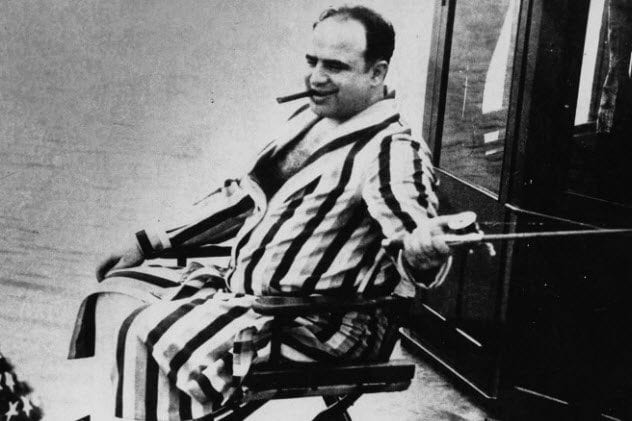
Countless myths have swirled around Capone’s final years. One of them is that he stocked his entire swimming pool with fish so that he could spend his days catching them to pass time. Though the legend is false, few know that if he had wanted to do so, he would have been unable to because he was broke.
The man who had once earned $40 million a year now struggled to support his family on an income of $600 a week, which was provided by former associates of the Chicago “Outfit.” The days of living a life of luxury were gone, yet he found enjoyment walking the grounds of his property searching for butterflies with his granddaughters.
His fall from the top was evident even in death, with few of his friends attending his modest funeral in winter 1947. His wife, Mae, remained in their Palm Island home for only five more years after he died.
Then she was forced to sell due to financial constraints. Prior to her passing in 1986, Mae set ablaze every letter that Al had written her while imprisoned, forever erasing another side to a man we have come to know as Scarface.
9 The Convict Orchestra

During Capone’s imprisonment at Alcatraz, prisoners were granted permission to purchase musical instruments if they desired to join the convict orchestra. Capone, who didn’t have a musical bone in his body, purchased several instruments.
One of them was a banjo that he played alone in a corner despite being a member of the band. He did this because the other felons despised the gangster whom they felt was constantly seeking to take control of the orchestra.
This led to constant disputes, reminiscent of juvenile high school arguments, between Capone and his fellow inmates. Tensions rose to the point that the men refused to play if Capone attempted to be part of the band.
The animosity boiled over one Saturday afternoon when convicted kidnapper Harmon Waley attacked Capone from behind. The Chicago gangster was notoriously pushing Waley around, leading Waley to create an altercation that resulted in the orchestra ganging up on Capone.
Chairs were thrown, and fists were flying. However, security guards immediately came to the rescue and saved Capone from a potential mob lynching. Hilarious as it may seem, Capone was the one who was punished for his “second fight on the Rock.”
8 Mental Disturbances
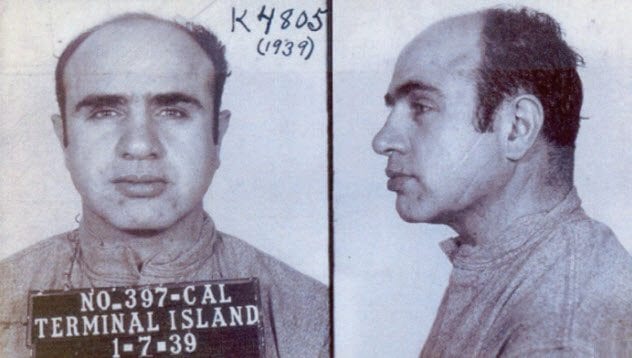
Capone was a notorious womanizer even after his marriage to his wife, Mae, in 1918. Years of impetuous philandering led to his contraction of syphilis. Capone purposely did not seek treatment for this STD because he feared that Mae would discover his adultery. His imprudent reasoning ultimately led to Capone transmitting the disease to his wife.
As the years passed, Capone’s untreated illness caused his mental state to significantly unravel. Prison physicians at Alcatraz took notice of his deterioration as well as his increasingly inexplicable violent outbursts which they described as “intermittent mental disturbances.”
Following his release on November 16, 1939, Capone was mentally incapable of returning to the “Outfit.” Thus, he never publicly set foot in Chicago again. According to his psychiatrist in 1946, Capone had the mentality of a 12-year-old child. He spent the remainder of his days having imaginary conversations with enemies and deceased colleagues while spending most of his time wearing pajamas by the pool of his Palm Island estate.
7 Lawsuits And Injections
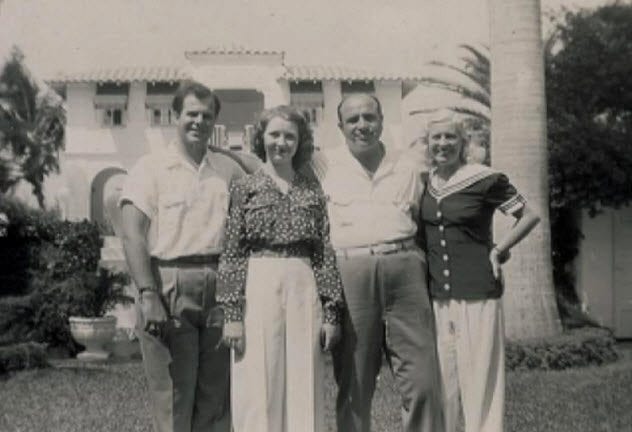
In July 1938, the Chicago Tribune published a report documenting Capone’s decline. A city that knew only of a man who was powerful and ruthless was now presented with an unforeseen glimpse of a broken patient whose mind had ceased to function. Despite reports of the gangster often being a nuisance while imprisoned, the paper stressed that Capone, who was now in a continual daze, was not violent and no longer needed a straitjacket.
Such an innocuous description was not enough to sway the city of Miami Beach, which unapologetically denounced Capone’s arrival in Florida. Fearing the violence and corruption that was the epitome of Capone’s past, city officials sued the gangster. They stated that his new home was “a menace to the safety and well-being of residents.”
Such a lawsuit was insignificant, however, for a man whose mind could no longer function soundly. Despite the fact that the best medical care was afforded to him, some of the prescribed forms of treatment were questionable. Case in point: To fight the syphilis by raising his body temperature, doctors gave Capone injections to induce malaria, a deliberate inoculation that proved futile.
6 Cocaine Withdrawal

Aside from the untreated venereal disease that was gradually destroying Capone’s brain, he was also suffering from extreme cocaine withdrawal by the time he arrived at Alcatraz.
In fact, his dependency and abuse of the “booger sugar” was so severe that the narcotic had eaten away at his nasal septum, creating a significant perforation. However, many historians—as well as the prison’s physician, Dr. Raymond M. Ritchey—erroneously attributed this observation to syphilis.
Interestingly enough, the collapse of Capone’s nasal septum was not fully explained until nearly 60 years later when Dr. Jack Shapiro, a medical consultant, examined Capone’s X-ray plates from June 4, 1938. The findings showed no evidence of disease in Capone’s sinuses, further shedding light on the severity of the gangster’s addiction.
If the debilitating symptoms of syphilis weren’t enough to break a man who once ran an entire city, now he was faced with the agonizing effects of withdrawal. Though no sympathy should be afforded to a man as ruthless as he was, it’s reasonable to assume that he truly suffered following his conviction and imprisonment.
5 Capone’s Entourage At The Hospital

After his release from Alcatraz, a sickly Capone sought treatment at the renowned Johns Hopkins Hospital. Unknown to the gangster, the hospital’s board of trustees was concerned about his notoriety and refused to admit him. This occurred once more in Guilford, which ultimately led Capone to take up residence at Union Memorial Hospital in Baltimore.
Upon his arrival, Capone took over the hospital’s entire fifth floor. He also brought along an entire entourage consisting of bodyguards, a masseur, his barber, numerous family members, and a taste tester to ensure that his food wasn’t poisoned. For the next five weeks, Capone was under the care of Dr. Joseph E. Moore.
Following his discharge, Capone was tremendously grateful for the compassionate care he’d received at the sole hospital that allowed his admittance. To show his gratitude, he donated two Japanese weeping cherry trees, one of which still stands today outside the hospital’s entrance nearly 80 years later.
4 Penicillin

By the early 1940s, a grossly overweight Capone lacked mental and physical coordination and suffered “epilepsy-like” seizures. Often walking rapidly in a jerky motion, he whistled and hummed while speaking to imaginary beings.
It wasn’t until 1942 that penicillin became available. However, with the War Production Board imposing a strict quota on the antibiotic, it was exceptionally difficult to obtain.
Fortunately for Capone, Dr. Joseph E. Moore managed to acquire the drug, which he administered to his notorious patient. Interestingly enough, Capone became one of the first syphilis patients in the history of medicine to be treated with the antibiotic.
Nevertheless, Capone’s mental state had irreversibly deteriorated by that time. No drug could reverse the mobster’s dire and mortal condition. However, the penicillin did halt the advancement of his debilitating symptoms for some time.
3 Torture And Special Privileges

Unlike present-day America where a majority of prisons look more like country clubs than actual penitentiaries, Alcatraz was the epitome of what it meant to serve hard time. It has been said that inmates were subjected to harsh discipline at the hands of guards and Warden James Johnston. This included beatings, starvation, and being thrown in the “dungeon.”
Perhaps most of the inmates’ dismay about their treatment was their claim that Capone was the only prisoner who did not receive such brutal handling. Instead, he was granted special privileges due to his political influence.
In one instance, convict John M. Stadig claimed that he and another prisoner had circulated a petition asking for reading material and one motion picture to be shown per month, a request that was met with the duo being chained and starved in the dungeon. This form of punishment even led Capone to take sides with Stadig, going on strike with the other prisoners in protest of his fellow inmates’ abuse.
Regardless of Capone’s support, the preferential handling afforded to the mobster enraged fellow prisoners. They described the Rock as a “hell hole from which men are willing to risk their lives to escape.” Despite Stadig’s claims, prison officials emphatically denied the story, which originally ran in the Madera Tribune in December 1934. However, the government maintained that Alcatraz was not designed as a place for reformation.
2 Final Arrangements
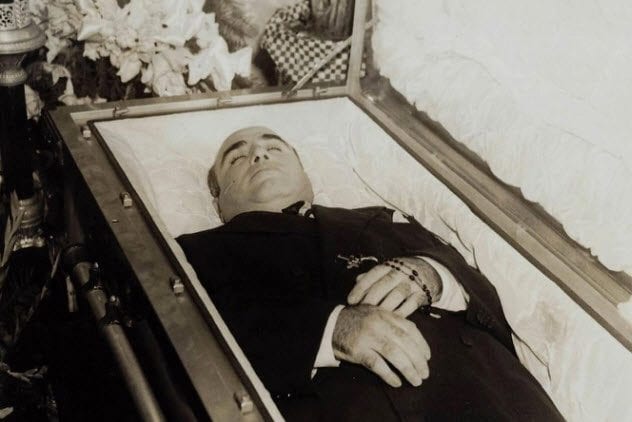
Until Capone died on January 25, 1947, the press staked out his Florida home with the hopes of catching a glimpse—and picture—of the infamous mobster. To avoid a public spectacle, Capone’s body was secretly transported nonstop from the family estate in a regular car on Highway 41 to Chicago.
That evening, Capone’s son, Sonny, announced to the press that his father had passed. A hearse arrived, only to leave the residence with an empty casket inside. Unknown to those in attendance (with the exception of Capone’s family), a fake funeral was held the following day. Some of the biggest names in Florida, including Desi Arnaz, paid their respects.
A short time later, the Capone family made their way to Chicago by train with reporters in tow. Meanwhile, members of the Outfit were spreading the word as to when and where Capone’s real funeral would be held. Following a mass at Holy Name Cathedral in Chicago, Capone was buried at Mount Olivet Cemetery on February 1, three days prior to the “scheduled” date given to the media.
However, this would not be Capone’s final resting place. Following his mother’s death in 1952, his casket was moved to Mount Carmel Cemetery, where it remains today.
1 Capone vs. Lucas
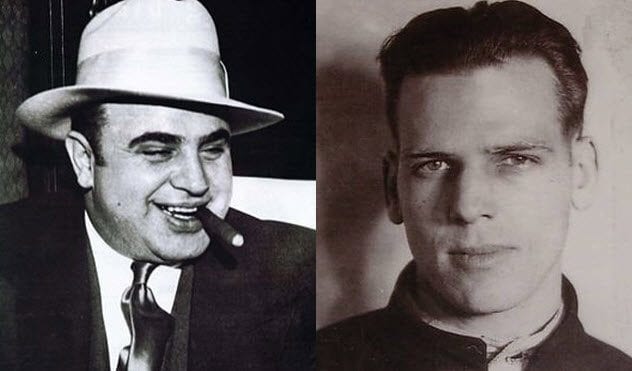
James “Tex” Lucas was a career criminal in every sense, causing chaos throughout his life while bringing misery to those he came across. In 1935, his terrible deeds ultimately led him to Alcatraz, where he continued his seditious antics. He constantly engaged in clandestine conduct, including a violent escape attempt which led to the death of Officer Royal C. Cline in 1938.
Despite his vast rap sheet, Lucas will forever be known as the man who nearly took the life of Al Capone. On June 23, 1936, Capone found himself in the shower room with Lucas, who had managed to obtain half of a pair of scissors. Lucas used the scissors to ferociously slash the Chicago gangster several times.
Capone sustained chest wounds and superficial defense cuts to his hands, but he survived. Lucas’s explanation for the attempted murder was that Capone had threatened to kill him, an extremely plausible claim given Capone’s homicidal history.
Although Lucas had been given a life sentence for murder, the US judicial system paroled the killer in 1958. Lucas lived as a free man for another 40 years until he died on November 28, 1998.
Adam is just a hubcap trying to hold on in the fast lane.








